City Trip with Bierverbond
At Hollands Hophuis we love traditional German beer. Beers that are brewed to drink, that are about balance and in which subtle nuances make the difference. At Brouwerij Bierverbond they love them too and together with them we made a journey along 6 German cities and their beer types.
Of course, we brought the hops with us, from German soil. On this trip, we chose traditional varieties, precisely the hops that bring the nuances that these types of beer need. Bierverbond did the rest.
Here we explain the 6 hops in these wonderful beers.
Kölsch: Hallertau Mittelfrüh
This type of beer may actually only be called Kölsch if the brewery where it comes from has a view of Cologne Cathedral, which is why Bierverbond calls it Kölsch-style. It is a blond and very drinkable beer, in Cologne traditionally served at high speed in a Stange: small, upright 0.2 litre glasses.
Hallertau Mittelfrüh is a noble hop variety from the most famous and largest hop region in Germany. This is the core of European hops, as Mittelfrüh grows naturally in Hallertau. It is the hop that provides aromas for traditional German beer styles. Its balanced aroma of spices, flowers and citrus are an excellent fit for a Kölsch.
Alt Bier: Perle
Where Kölsch is the beer of Cologne, Alt is the beer of nearby Düsseldorf. Literally translated, it means old beer, which in fact means that it is an old type of beer, Alt is best drunk fresh. It is a brown beer that existed before all the light-coloured beers made their appearance, hence the name Alt. It is light in alcohol and surprisingly refreshing.
Perle is introduced in the late 1970s. Developed and grown in Germany, with Northern Brewer as its mother. This hop variety has a spicy aroma that can resemble mint and tea, with a peppery touch, these aromas are nicely subtle. The percentage of alpha acid is fairly high, which can produce a clean hop bitter.
Dortmunder Export: Spalter Select
In Germany, you see Export beers on a fairly regular basis. In almost all cases, it is a slightly heavier version of an existing beer type, often half to one percent more alcohol. That is not the entire story with Dortmunder. You could say that it is a slightly heavier pils, but the hard water from Dortmund gives it its very own character.
Spalter Select is a cross between the two noble hop varieties Hallertau Mittelfrüh and Spalt with the aim of creating an improved version of Spalt. This results in a kind of super noble hop. It has a floral and fruity (lemon) aroma, with a hint of pine. Developed in one of the "breeding grounds" of German hops: Hüll.
(Text continues below image)
Schwarzbier: Tettnang
A beer type from former East Germany. Black beer, because that is the first impression. But if you look closely, it is a pretty clear, very dark red beer. Roasted malt gives it flavours like cocoa and roasted coffee. It is meant to remain drinkable, which is why it is never overwhelming.
Tettnang comes from southern Germany, near the place of the same name as the hops, next to the Bodensee. This hop variety has similarities with the noble varieties from Hallertau and Žatec (Saaz), although it is more floral and spicy, without overdoing it. These characteristics give a Schwarzbier, in which the malt is dominant, just the right complement in the overall aroma.
Rauchbier: Northern Brewer
The beer type of the beer-pilgrimage site of Bamberg. Although it is actually a collection of beer types, as it goes from Rauch-weizen via Rauch-bock to Rauch-helles and so on. What they share is easy to guess: Smoke. That comes from the malt, which is kilned over smoke that gives aromas similar to bacon. It sometimes gives a shock effect, but once you have recovered from that, you enjoy magnificent, flavourful beers, which are, of course, also easy to drink.
Does a Rauchbier need hop aroma? We do think so. It gives a subtle extra layer to the beer, so there's plenty to experience once you get used to its smoky character. As the name Northern Brewer suggests, this variety is not originally from Germany, but is most commonly grown in Germany today. Quite high in alpha and therefore ideal as a bitter hop. The aroma is slightly spicy.
Munich Helles: Rottenburger Spät
Helles means light-coloured, and this name is used in Germany for several types of beer. Münchener Helles is the original type and the Bavarian answer to the Czech Pilsener. In reality, most common "pilseners" do not resemble the original Czech, but rather the Münchener Helles. Make no mistake, a good Helles is different. Grainy, clean and smooth with a subtle hoppiness.
Rottenburger Spät is one of our Heritage Hops: traditional varieties that have not been cultivated for a long time and that have been given a new life. This variety from Baden-Württemberg (above Switzerland) has a special aroma of cedar and pine, green pepper and spicy notes of lavender and peppermint. These aromas are subtle, making Rottenburger Spät very suitable in a Helles Lager.
(Text continues below image)
Want to try it?
You can order it in the Bierverbond webshop (Dutch). If it is sold out, don't worry, because this brewery will certainly continue to brew gems of Germany!




